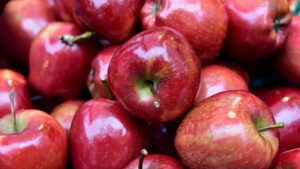
The Changing Intellectual Property Landscape
_x000D_

_x000D_
Previous authors have called attention to the lack of social license, despite the demonstrated trait and chemical stewardship and the environmental benefits of modern agriculture. I’d like to focus on the IP component — how the policies of IP rights granting agencies can affect investment in innovation in new plant genetics and varieties._x000D_
_x000D_
Intellectual property rights (IPR) are intended to incentivize and reward investment in risky technologies, when successful. In Canada, we have long since moved past the Oncomouse decision with plant cell patents purportedly protecting new plant varieties and with other strategies to protect such varieties. Indeed, the pending Bill C-18 would modernize Canada’s Plant Breeders’ Rights (PBR) legislation and, consequently, regulations. While the bill has been discussed at length, it should be kept in mind that PBR protects the variety, without encumbering the germplasm. In other words, the germplasm comprising a protected variety is available to other breeders for use in their programs. The difference with patents is that the germplasm is not available to other breeders._x000D_
_x000D_
Various jurisdictions are taking divergent paths, so I will focus on developments in patenting of novel genetic material in the United States. On March 4, the U.S. Patent and Trademark Office issued a guidance memorandum, Guidance For Determining Subject Matter Eligibility Of Claims Reciting Or Involving Laws of Nature, Natural Phenomena, & Natural Products, to implement a new procedure for determining the subject matter eligibility of claims in view of the Supreme Court’s decisions in Association for Molecular Pathology v. Myriad Genetics, Inc. (2013), and Mayo Collaborative Services v. Prometheus Laboratories, Inc. (2012). These have particular relevance to gene sequences, although plant extracts and other medicinal, nutrition, diagnostic and therapeutic products will likely also be affected and no longer considered as patentable subject matter. The guidance is arguably noncompliant with Trade-Related Aspects of Intellectual Property Rights and trade issues have been raised, particularly in light of an early September Australian Federal Court decision upholding a lower court’s holding that the Myriad patents constituted acceptable subject matter in Australia. Vigorous discussion on the guidance from the IP community has led the USPTO to issue a revised guidance._x000D_
_x000D_
The effect on venture capital investment in gene discovery has been chilling. If patent protection is not available and trade secrecy is not an option, protection of market position becomes problematic. While this effect has not yet been noted in the larger multinational research-based companies, institutional investors have expressed concerns. The effect on fundability of research into plant genetics is negative, and as seed is the preferred delivery vehicle for these innovations, the continued genetic gain in cultivars is far from assured. The question for patenting new plant cultivars devolves to: “Does there exist, now or in the past, a naturally occurring genotype identical to that proposed?” In my opinion, the answer would be crop specific — for hybrid corn it is unlikely and for Canada Western Red Spring wheat, it’s probable._x000D_
_x000D_
Traditional plant breeding methods will continue to move crop species into new areas, such as the increase in corn and soybean acres Manitoba and Saskatchewan. However, modern breeding techniques using genetic manipulation of crop species are the only methods which have the potential to feed the anticipated 9 billion people by 2050. Targeted gene editing and other techniques avoiding naturally occurring gene sequences have great potential and investment is beginning to flow in this direction. At the end of the day, investment in crop improvement will continue to be driven by market forces, which respond to changing intellectual property regimes in creative ways, directing research into effective and profitable channels._x000D_
_x000D_
Bert Innes, Ph.D. and principal of Eagle Biotechnology Consultants and adjunct professor in the Department of Plant Science at the University of Manitoba













